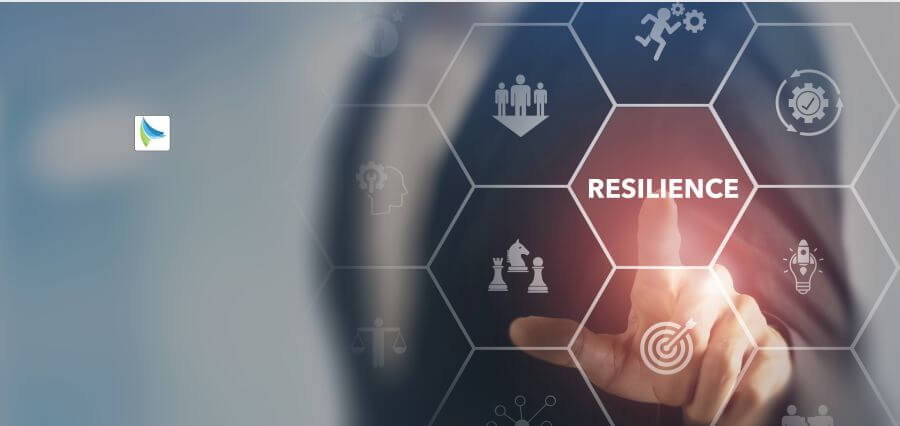The global workforce has entered a new era—one that values flexibility, autonomy, and digital connectivity over rigid schedules and office cubicles. What began as a reactive shift during the COVID-19 pandemic has evolved into a long-term transformation. Today, remote work is not just a trend; it’s a strategic choice embraced by companies seeking agility, resilience, and access to global talent.
At the center of it is Software-as-a-Service (SaaS). With cloud application enabling seamless collaboration, real-time communication, and elastic infrastructure, SaaS is the pillar of the remote-first workplace. Not only is it enabling remote work, it is shaping its future.
The Cloud as a Workspace
Those were the days when productivity was chained to physical offices or in-house servers. SaaS technologies have emancipated the modern workforce from the chains, providing a means to access workspaces from anywhere on the globe, at any time.
Applications like Google Workspace, Microsoft 365, Slack, Zoom, and Asana are now essential digital infrastructure. They enable remote teams to communicate, collaborate on projects, exchange documents, and work together in real time—regardless of location or time zone. With everything cloud-hosted, work isn’t where you are—it’s what you do.
SaaS solutions have revolutionized the meaning of “presence” within a working environment, offering continuity, consistency, and collaboration in an unfenced world.
Borderless Seamless Collaboration
Collaboration succeeds or fails remote work. SaaS solutions allowed teams to ideate, create, and execute as if they were sitting next to one another—even oceans apart.
Whether developers coding in GitHub and Jira, marketing teams ideating in Figma and Notion, or sales teams closing deals using HubSpot and Salesforce, SaaS empowered ecosystems where collaboration is asynchronous, agile, and relentless.
The platforms also foster transparency. Shared dashboards, version histories, and real-time notifications reduce information silos and keep everyone in the loop. Managers are given real-time feedback on productivity and task status, without micromanaging.
Cybersecurity, Compliance, and Control
Security of data is one of the chief concerns with remote work. With corporate networks being accessed by the employees from home networks and personal computers, the risk surface has grown considerably. SaaS once again plays a significant role in this regard.
Enterprise-grade SaaS providers now offer security measures like multi-factor authentication, encryption, single sign-on (SSO), and role-based access controls to help organizations protect sensitive data in a decentralized environment. Most platforms are also compliant with international norms like GDPR, HIPAA, and SOC 2, giving companies the degree of assurance required to do business around the world.
Second, centralized management from cloud platforms makes it possible for IT departments to control access by users, track activity, and push patches without hands-on involvement—a critical feature in a remote or hybrid environment.
Agility and Scalability for a Distributed Workforce
Remote working isn’t a single-fits-all solution. Teams change, markets change, and business requirements change. SaaS platforms provide the flexibility and scalability organizations need to respond in real time.
Have to bring aboard 50 new hires spread out across multiple time zones? SaaS can provision applications on demand. Shrinking? Licenses can be scaled back without the added overhead of infrastructure. Unlike legacy software models, SaaS applications are designed with elasticity—a critical quality in an uncertain world.
In addition, integrations between SaaS solutions allow organizations to create tailored digital spaces. APIs, plug-ins, and low-code integrators get different tools “talking” to each other—accelerating workflows and decreasing redundancies.
Supporting Talent and Empowering Work-Life Integration
Remote work isn’t a business model—it’s a talent model. Employees now want flexibility, autonomy, and sense in the workplace. SaaS solutions make it possible by empowering work-life integration rather than requiring work-life separation.
With mobile-enabled applications, clean interfaces, and device prevalence, SaaS apps set employees free to work in styles that suit their lives. Such autonomy drives engagement, retention, and productivity.
For leadership, SaaS-based analytics also include insights into employee well-being, workload distribution, and patterns of performance—informed decisions regarding team support, development, and resource allocation.
Reinventing Company Culture in the Cloud
Culture once lived in physical offices—hallway gossip, team lunches, and in-person meetings. But as work is now digital-first, culture must play catch-up. SaaS platforms are helping businesses rebuild and reimagine culture in the cloud.
Virtual town halls, recognition platforms, and social collaboration spaces keep employees connected to the company mission and to each other. Platforms like Slack, MS Teams, and Workplace by Meta allow for informal chat and formal announcements to coexist—keeping the humanity intact in remote settings.
SaaS also enables inclusion. With captioning capability, language variations, and accessibility controls, inclusive and dispersed teams are able to participate fully—building a culture that crosses borders and backgrounds.
Looking Ahead: SaaS and Future of Work
As business shifts toward a hybrid future—some remote, some in-office—SaaS will be the central part of future-proofed infrastructure. Coming advances in artificial intelligence, automation, virtual reality, and machine learning are already enhancing SaaS potential, creating more intelligent, more intuitive platforms that anticipate and make higher-order work possible.
Work in the future will include AI-powered collaboration aids, virtual reality digital offices, and predictive workforce planning analytics. And as SaaS providers provide ever more solutions tailored to industry niches and functions, remote work will be even more sophisticated and frictionless.
Conclusion: The Digital Backbone of Modern Work
The SaaS revolution is not just a technology phenomenon—it’s the electronic backbone of modern work. It doesn’t merely serve where we work, but how we work, how we collaborate, and how we thrive in a dispersed age.
Remote work isn’t going anywhere. And as businesses stretch for resilience, innovation, and worldwide reach, it is SaaS that will persist to offer the flexibility, scalability, and people-first design to bring that future into existence.
It is in this new era of work that the businesses that will succeed won’t just adopt SaaS—they’ll craft with it, drive with it, and grow due to it.
Read More: Recurring Revenue, Real Results: The SaaS Subscription Boom











